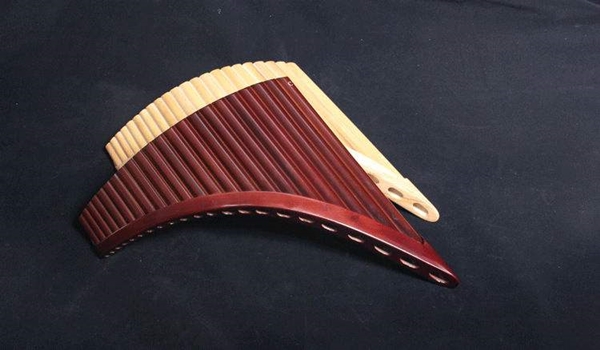Exhaust appearance and structure
Paixiao is a "blow hole and chirping musical instrument", made of bamboo, about 80 cm long, and the purple bamboo flute has about 6-8 bamboo knots. Its shape is as follows: the upper end of the seal (or opening) has a blow hole on the edge of the bamboo joint, the tube body generally has 6 accuses, 5 holes in the front, 1 hole in the back, and two pairs of sound holes below, the bottom end is an open tube, the sound interval It is two octaves, and can also be trained to play the overblown 4th interval, but it is not often used.

As early as thousands of years ago, Xiao was circulated among the Chinese people. At that time, Xiao was a single-sided Yan Xiao. Later, it was discovered that pipes of different lengths can emit musical sounds of different heights, so they invented the exhaust. After the Han Dynasty, there was an equal-pipe-shaped exhaust system. The lengths of each pipe were similar, but the length of the pipe body was formed by the wax bottom and the height of the wax bottom, so as to blow different pitches. Tang Duyou's "Tongdian" contains: "Xiao, weaving bamboo has a bottom, the big one is 23 tubes, the small one is 16 tubes. The long one is turbid, the short one is clear, and the beeswax is used to strengthen the bottom and increase or decrease it, it is harmonious." Japan The Nara Shoso-in houses the remnants of the Tang Dynasty and other tube shapes. The original 18 pieces are in a group, and the remaining 9 pieces are 23.7~28.8 cm long. The tube is stuffed with paper grains to adjust the pitch. From the Yuan and Ming dynasties, the row Xiao was changed to the exquisite 椟 Xiao. Usually 16 tubes, the tubes have a wooden crust, and the paint is bright and painted in a colorful style. In the Qing Dynasty, the double-wing-shaped scorpion appeared in the row, and there were also 16 pipes, divided into two columns on the left and right, and the pieces were short in sequence, like the two wings opened by the wind. After modern times, Paxiao was impacted by other musical instruments, and gradually disappeared. It was not until the early 1980s that Shijiahuan of the Jilin Provincial Opera House successfully developed double-row pipes and keys to eliminate Xiao on the basis of the original Xiao style. It makes the performance of Xiaoxiao more flexible and convenient, which can play lively and fast polyphonic music, and can also play melodious and soothing lyrical music, and the expressiveness is greatly improved.
The panpipes are shaped like phoenix wings and are made of bamboo. The number and length of the pipes in the past dynasties are different. In the classification of ancient musical instruments, the pan flute is listed as a bamboo musical instrument. It is to arrange bamboo pipes of different lengths in a row, braided with ropes, bamboo grate pieces or inlaid with wooden frames. If the length of the bamboo pipe is the same, the wax (different shades) is used in the pipe to obtain different musical tones. Therefore, there are two types of panpipes: bottomless and back cover, which are called "hole flute" and "bottom flute" respectively. From the initial 3 pipes, the number of pipes is 10, 13, 16, 20, 21, up to the maximum of 24 pipes, and each pipe only makes one sound.
 渝公网安备 50010702504639号
渝公网安备 50010702504639号